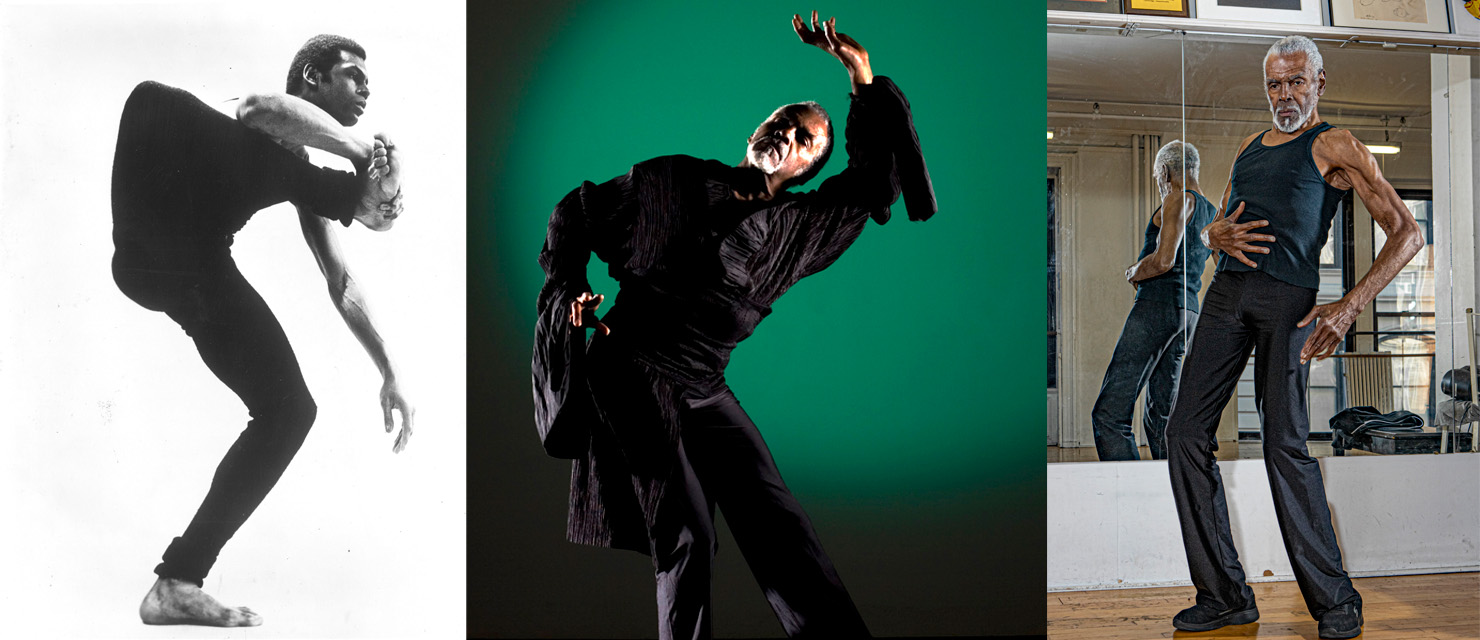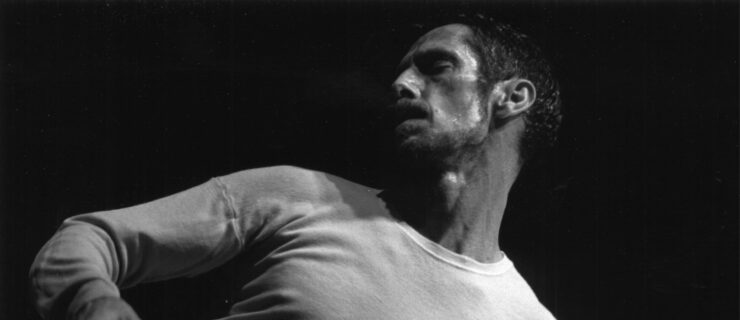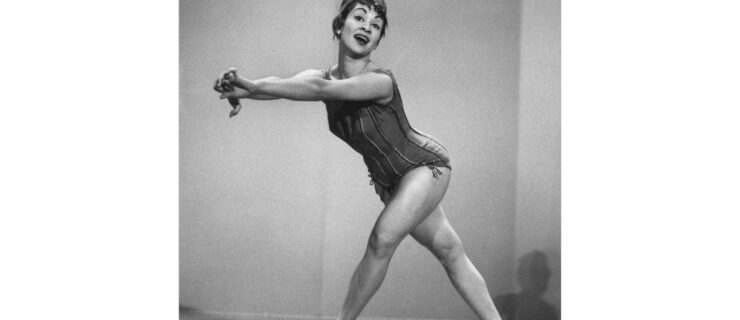Remembering Gus Solomons jr, 1938–2023
Striking performer. Adventurous choreographer. Unforgettable teacher. Straight-from-the-hip reviewer. Inspiring mentor. Gustave Martinez Solomons jr was all these things and more.
With boldly energetic dancing, a Hollywood face, and a ready laugh, Solomons—known as Gus—seemed comfortable in any dance genre. He moved fluidly between the largely white postmodern community and various dance communities of color. He was beloved by people throughout the dance world, so it’s no wonder that, since his passing on August 11 at age 84, messages of love and gratitude have come pouring in on social media.
Born in Cambridge, Massachusetts, Solomons briefly took tap, acrobatics, and ballet lessons in a local studio. As an architecture student at Massachusetts Institute of Technology, he moonlighted by studying dance with Jan Veen, the German expressionist émigré who founded the dance program at Boston Conservatory. (When Solomons told one of his professors at MIT that he wanted to be a dancer, the reply, according to Solomons, was, “Oh, no, you’ll be a credit to your race if you become an architect!”)
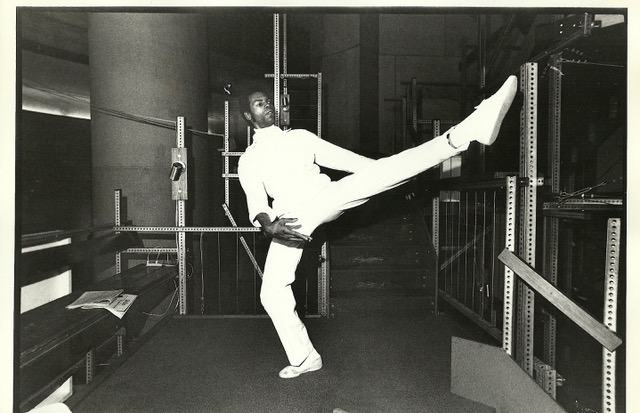
“Architecture and dancing are exactly the same. You design using all the same elements—time, space and structure—except that in dance, time is not fixed.” —Gus Solomons jr, from Cambridge Black History Project
Choreographer Donald McKayle saw Solomons in class in Boston, and invited him to New York City to take part in a musical that turned out to be dead on arrival—but Solomons’ professional life in dance was born. He quickly picked up gigs not only with McKayle but also with Pearl Lang, Joyce Trisler, Paul Sanasardo, and, notably, Martha Graham.
In the early 1960s, Solomons was part of a studio-sharing cooperative called Studio 9, with Elizabeth Keen, Phoebe Neville, Cliff Keuter, Elina Mooney, Kenneth King, and others. He attended some of the sessions in experimental dancemaking that Robert Dunn led at the Cunningham Studio, and he enjoyed using chance methods. But Solomons was “too in love with technical dancing” to invest in the pedestrian aesthetic of Judson Dance Theater, which emerged from Dunn’s workshops. Not to mention he was already getting paid gigs with more established companies.
Solomons found his aesthetic home in the Merce Cunningham Dance Company, where he danced from 1965–68, the first Black man to join the company. There, he could just dance—leap, lunge, pivot, skitter, crawl, and extend his space-piercing legs. He originated roles in key Cunningham works: How to Pass, Kick, Fall and Run, RainForest, Place, Walkaround Time, and Scramble. After three years, a back injury forced him offstage temporarily.
“Studying with Merce Cunningham, learning to dance from stillness, was giving me technical control rather than sheer muscle power, on which I’d been dancing until then.” —Gus Solomons jr in Reinventing Dance in the 1960s: Everything Was Possible, edited by Sally Banes
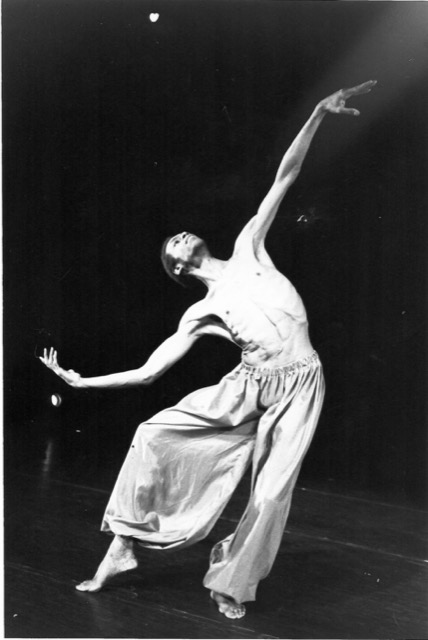
In the early 1970s, Solomons formed his own group, the Solomons Company/Dance, for which he choreographed more than 150 pieces. Taking an analytical approach, as per his architecture training, he made charts, designs, and diagrams and explored alternative spaces. Although many of his works had no music—or just the sounds of the audience coughing and rustling papers, as in Kinesia #5 (1967)—he sometimes collaborated with composers such as Mio Morales or Toby Twining. He embraced the new technology of video, creating an ingenious use of a dual screen for “City/Motion/Space/Game,” a 1968 work for WGBH-TV in Boston.
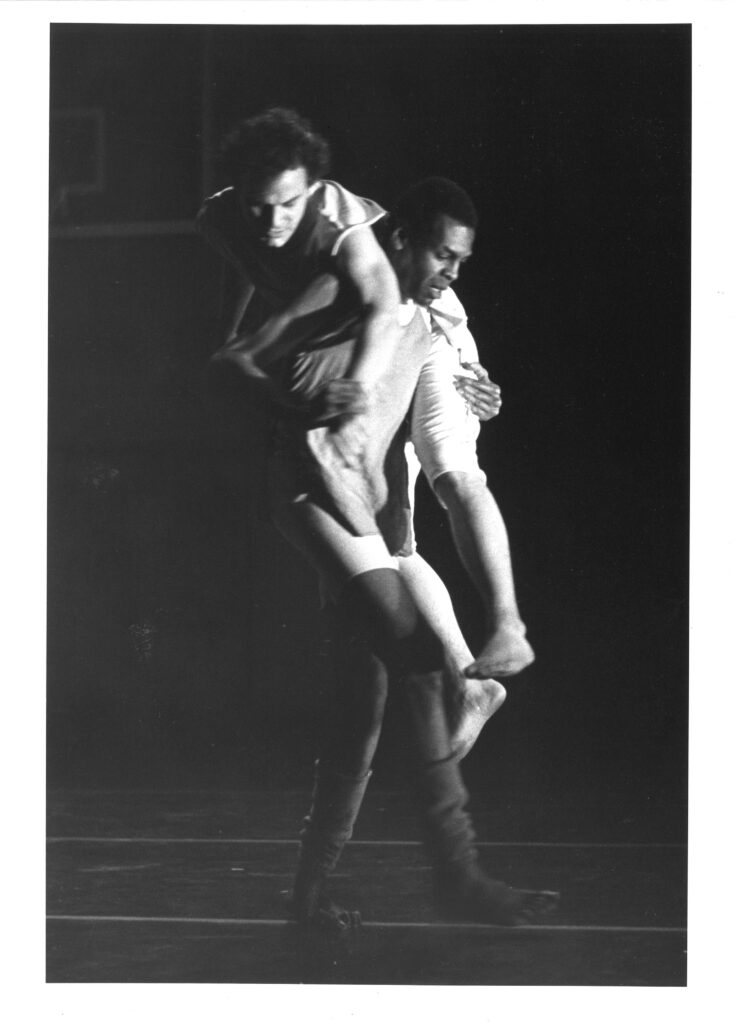
A watershed moment came in 1982, when choreographer Ishmael Houston-Jones organized Parallels, a series for Black choreographers outside the “Black mainstream” of modern dance. Solomons, Ralph Lemon, Bebe Miller, Blondell Cummings, Harry Whittaker Sheppard, and others were invited to show their work at Danspace Project in downtown New York. As Solomons wrote in 2012, when the program was reprised, he was glad to be included “instead of being criticized for not being ‘black enough’ as I often was back then.”
In 1996, Solomons founded Paradigm, a small group celebrating the artistry of older, seasoned dancers. The kickoff was A Thin Frost (1996), a trio Solomons made for himself, Carmen de Lavallade, and Dudley Williams. This gem of a dance had moments of solemnity, wistfulness, and hilarity, where all three stars could revel in being themselves before finally reaching for a communal but tentative touch. Paradigm also commissioned other choreographers, including Kate Weare, Robert Battle, Jonah Bokaer, Wally Cardona, Larry Keigwin, and Dwight Rhoden.
“Paradigm…has reconfirmed my original naive conviction that dance can be a life-long vocation. Age need not be a limitation; it is a resource of life experience and dance craft that enriches performance beyond technical virtuosity.” —Gus Solomons jr, from MIT’s Open Door Archive
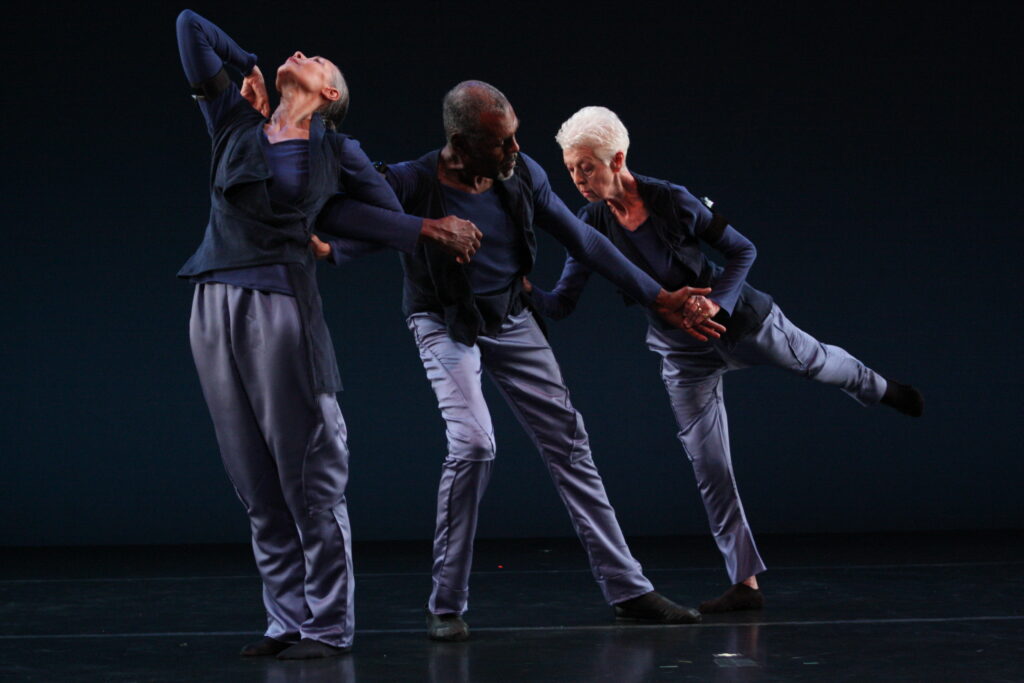
Solomons was a demanding but nurturing educator, teaching at UCLA, UC Santa Cruz, CalArts, Bard, and—for many years—NYU’s Tisch School of the Arts. In 2004, he received the American Dance Festival’s Balasaraswati/Joy Ann Dewey Beinecke Endowed Chair for Distinguished Teaching. The Bessie Awards honored him with Sustained Achievement in Choreography in 2000, and in 2014 the Jerome Robbins Dance Division at the New York Public Library for the Performing Arts named him a Dance Research Fellow.
Always nimble with words, Solomons wrote reviews and features for Dance Magazine, as well as for The Village Voice, Ballet News, Attitude, and The Chronicle of Higher Education. In recent years, he posted reviews and reflections on his own website, Solomons Says.
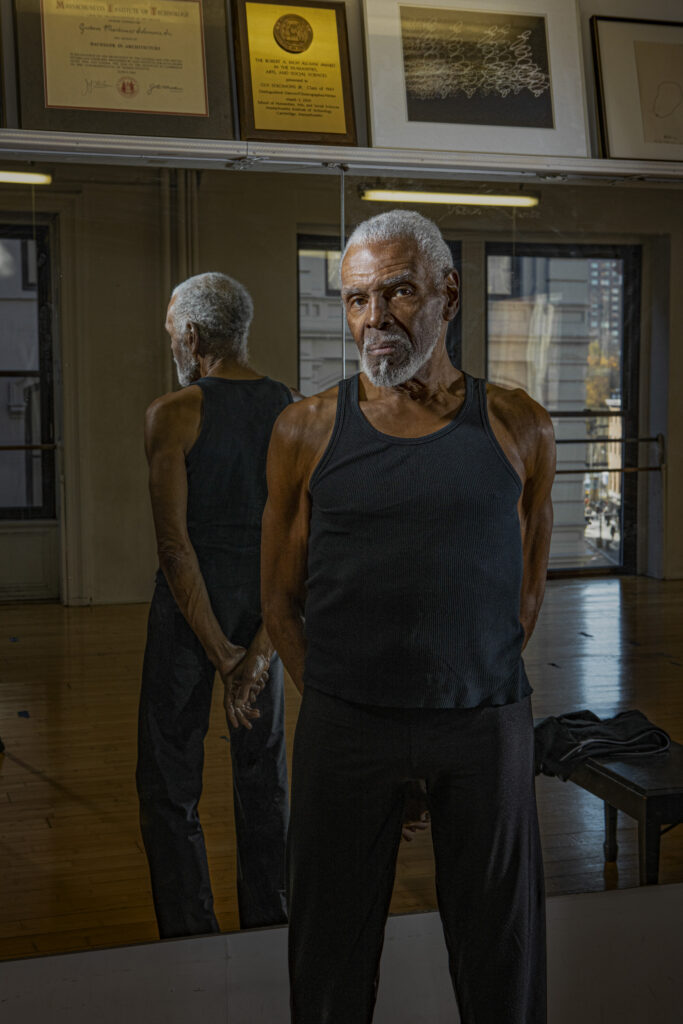
“I try to write reviews that are both engaging to the readers and instructive to the creators, while respecting the integrity of their efforts—however effective or not they turn out to be.” —Gus Solomons jr, from the Dance/NYC panel “Meet the Press,” Dance/NYC, February 26, 2012
Because Solomons’ contribution was so huge, we’ve asked some dance artists who worked closely with him for their memories.
Douglas Nielsen
Member of Solomons Company/Dance, 1973–75, and friend for life
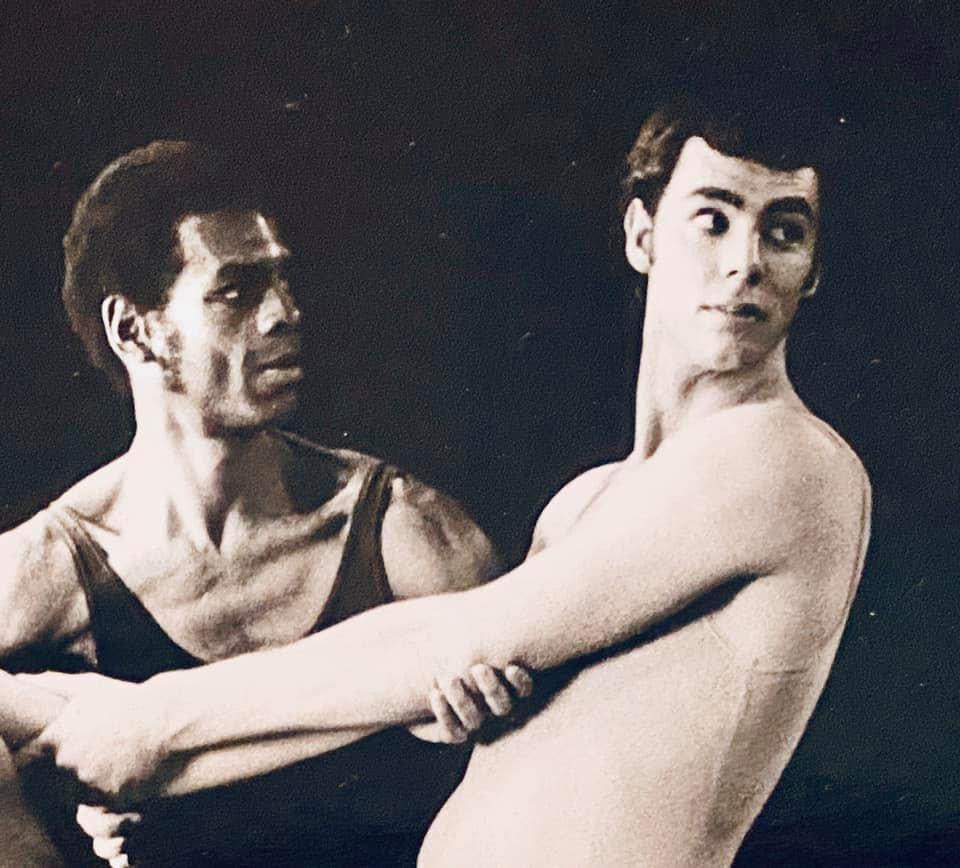
Gus was like a coffeepot that never stopped percolating. He was a source of infinite possibilities. Articulate to the core. He was a director with a purpose. Always prepared, and always in step with the times. His choreography was clear and nonnegotiable: “This is what it is. Now do it.” He often showed it, physically, but he also had prepared a movement score on graph paper for reference.
Gus lived his professional life as a man free of labels. He never defined himself by race, gender, or sexual orientation. When I asked him about that, he simply said he was “oblivious.” Truly an original.
Margaret Jenkins
Artistic director, Margaret Jenkins Dance Company
Gus and I started working on simply this fondness in 1964. I had met Gus when he came to teach a workshop at UCLA. He said, “Come east and let’s work.” I did. His long legs and my long torso became the “subject” of the work—how to find the balance between the two. He pushed me to lean into risk. He taught me how to trust I would be caught. He was fierce in his demand. He was kind with his physical support. There was joy, aways joy, close by.
Larry Keigwin
Artistic director, Keigwin + Company; producer of the short film #sharethemattress—Gus Solomons jr
Not only was Gus a mentor and friend, but he was also quick to dance for our camera when I asked him to participate in our video project Share The Mattress. It was a delightful and intimate afternoon. Gus gladly invited us into his bedroom and with cheer and vigor improvised for our camera. He didn’t need much direction….His physical instincts and dramatic intentions were spot on. Sensitive and self-deprecating (in a good way), he kept us laughing with clever conversation and witty quips. It was pure joy.
Donald Byrd
Artistic director, Spectrum Dance Theater; member of Solomons Company/Dance, 1976–78
What struck me about Gus was how thin he was, how long his limbs were, and that he was Black in what was often a very “white” context. I felt an affinity. The performance I saw, around 1973 at MIT, was enthralling. While Ailey’s work, which I was also enraptured by, struck me as heart and passion, Gus and his Cunningham-like vocabulary and odd organizing principles seemed to be a very different way of being Black. Its physicality was based on a subtle and ongoing interaction between body and mind, and an unapologetic assertion of the possibility that Blackness could be odd, astringent, and care little for respectability. I saw myself in him. And to some degree I still do.
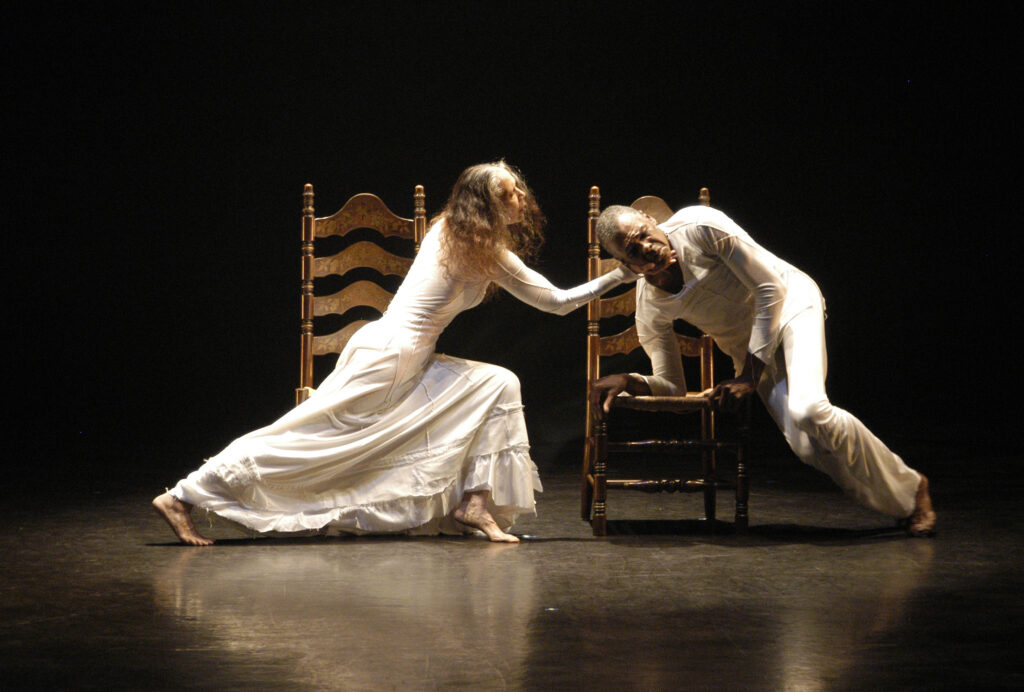
Michael Blake
Faculty member, University of Missouri–Kansas City; former member of Paradigm
Puzzles. To work with Gus was a puzzle from the day you committed until the day you completed the task. He would give you a map in words or on paper and say, “Make steps!” I loved that! I loved hearing his voice say that, too! That map was confusing, complex, challenging, and in the end, beautiful to look at and perform. Gus challenged my brain as well as my body and my nervous system.
Courtney Escoyne
Dance Magazine senior editor; studied with Solomons at NYU’s Tisch School of the Arts
Gus fundamentally altered the way I look at and talk about dance. Responding to our peers’ movement studies in composition class week to week always started in the same way: Gus projecting his warm, resonant voice to ask us, “Now, what did you see?” It was an invitation to not leap immediately to judgments of good or not good, whether what we’d seen was to our taste or not, and instead to analyze what had actually unfolded and what we had taken from it. The word “like” was banned from the room. If we wanted to express appreciation, we had to specify if we were intrigued, moved, made curious. He encouraged us to do the same thing when we attended performances, and reliably listened to, questioned, and supported our conclusions about what did and didn’t work. When he offered his own observations, it was invariably with wit, wisdom, and kindness—and more often than not opened up new angles we hadn’t considered.
A decade later, every time I sit at a keyboard to write about a performance or draw breath to give feedback to a peer, it’s still his voice that I hear first, asking not whether I had liked it, but what I had seen.
Read an expanded version of this post here.
